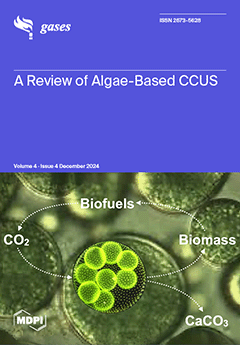Many governments around the world have taken action to utilise carbon capture (CC) technologies to reduce CO
2 emissions. This technology is particularly important to reduce unavoidable emissions from industries like cement plants, oil refineries, etc. The available literature in the public domain
[...] Read more.
Many governments around the world have taken action to utilise carbon capture (CC) technologies to reduce CO
2 emissions. This technology is particularly important to reduce unavoidable emissions from industries like cement plants, oil refineries, etc. The available literature in the public domain explores this theme from two distinct perspectives. The first category of papers focuses only on modelling the CC plants by investigating the details of the processes to separate CO
2 from other gas components without considering the industrial applications and synergies between sectors. On the other hand, the second category investigates the required infrastructure that must be put in place to allow a suitable integration without considering the specific particularities of each carbon capture technology. This review gives a comprehensive guideline for the implementation of CC technologies for any given application while also considering the coupling between different energy sectors such as heating, power generation, etc. It also identifies the research gaps within this field, based on the existing literature. Moreover, it delves into various aspects and characteristics of these technologies, while comparing their energy penalties with the minimum work required for CO
2 separation. Additionally, this review investigates the main industrial sectors with CC potential, the necessary transportation infrastructure from the point sources to the end users, and the needs and characteristics of storage facilities, as well as the utilisation of CO
2 as a feedstock. Finally, an overview of the computation tools for CC processes and guidelines for their utilisation is given. The guidelines presented in this paper are the first attempt to provide a comprehensive overview of the technologies, and their requirements, needed to achieve the cross-sector coupling of CC plants for a wide range of applications. It is strongly believed that these guidelines will benefit all stakeholders in the value chain while enabling an accelerated deployment of these technologies.
Full article




